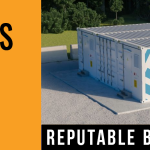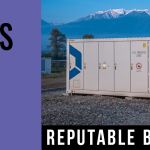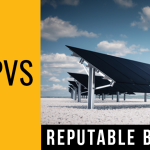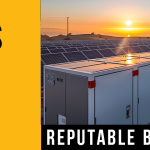 Hawaiian Electric, in partnership with Amber Kinetics and Elemental Excelerator, has launched operations of a four-hour kinetic energy storage system powered by flywheel technology. The pilot project is the first commercial use of Amber Kinetics’ advanced technology in the U.S.
Hawaiian Electric, in partnership with Amber Kinetics and Elemental Excelerator, has launched operations of a four-hour kinetic energy storage system powered by flywheel technology. The pilot project is the first commercial use of Amber Kinetics’ advanced technology in the U.S.
Hawaiian Electric and Amber Kinetics are testing the 8-kW/32-kWh storage system for local grid reliability and support and aid in the integration of renewable energy. One 8-kW unit can power approximately 25 homes for one hour.
Technical field data is being collected and is expected to guide planning for future utility-owned energy storage projects in Hawaii. Communications and controls Amber Kinetics is developing in collaboration with Hawaiian Electric will be tested in a real-world setting and scaled to other jurisdictions.
The five-ton flywheel stores electricity as rotational kinetic energy and is capable of charging and discharging for multiple duty cycles per day with no loss of capacity. The environmentally friendly system is 98% steel that can be fully recycled at the end of its 30-year design life. It was installed by American Electric, a Hawaii-based company, at Hawaiian Electric’s Campbell Industrial Park generating station on Oahu.
“Hawaiian Electric is eager to test the grid stabilizing and renewable energy storing of the flywheel,” said Colton Ching, Hawaiian Electric senior vice president for planning and technology. “Our evaluation of this very promising energy storage system will help us determine how we can use flywheels to help integrate renewables at a lower cost while improving reliability and resiliency of the grid.”
Amber Kinetics’ products offer substantial benefits for a wide range of utility and commercial applications. The firm’s breakthrough technology is the first to extend the duration and efficiency of flywheels from minutes to hours, resulting in safe, economical and reliable energy storage for a variety of utility-scale applications, including load shifting, peak shaving, frequency regulation, renewable firming and spinning reserve. The system is scalable and designed to allow for increased size through the addition of multiple flywheels.
read more
 Just one day after
Just one day after 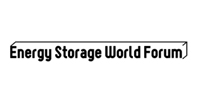 Combining component parts into hybrid systems to reap the benefits has always been an attractive prospect. In the past years, successful projects have come online for both solar-plus-storage and wind-plus-storage — the resiliency of battery energy storage combined with the financial boost from power generation.
Combining component parts into hybrid systems to reap the benefits has always been an attractive prospect. In the past years, successful projects have come online for both solar-plus-storage and wind-plus-storage — the resiliency of battery energy storage combined with the financial boost from power generation.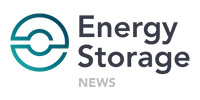 Chinese inverter manufacturer Sungrow has leaned on its joint venture with Samsung SDI to supply both inverters and lithium batteries to a large-scale energy storage project in Japan.
Chinese inverter manufacturer Sungrow has leaned on its joint venture with Samsung SDI to supply both inverters and lithium batteries to a large-scale energy storage project in Japan. Engie last week made official its agreement to acquire a majority stake in Electro Power Systems, a French-based energy storage and microgrid company with projects in the Americas, Europe, Asia and Africa.
Engie last week made official its agreement to acquire a majority stake in Electro Power Systems, a French-based energy storage and microgrid company with projects in the Americas, Europe, Asia and Africa. Micropower generation units, designed by GE’s India R&D centre in Bengaluru over the past two years, are now close to the stage of commercialisation. The units are expected to be hugely beneficial to remote microgrid-dependent communities.
Micropower generation units, designed by GE’s India R&D centre in Bengaluru over the past two years, are now close to the stage of commercialisation. The units are expected to be hugely beneficial to remote microgrid-dependent communities. India-based solar manufacturer and EPC player Vikram Solar has signed a collaboration agreement with the French Alternative Energies and Atomic Energy Commission (CEA), while at the founding ceremony of the International Solar Alliance (ISA).
India-based solar manufacturer and EPC player Vikram Solar has signed a collaboration agreement with the French Alternative Energies and Atomic Energy Commission (CEA), while at the founding ceremony of the International Solar Alliance (ISA). A big challenge for the EV and renewable energy revolution is that the much-needed batteries are made from lithium, a relatively rare and pricey metal. Rather than focusing on other metals like magnesium, a team of scientists from RMIT University in Melbourne have figured it out to build rechargeable “proton” batteries from abundant carbon and water. If commercialized, the technology could allow for cheaper Powerwall-type home or grid storage to back up solar panels or windmills.
A big challenge for the EV and renewable energy revolution is that the much-needed batteries are made from lithium, a relatively rare and pricey metal. Rather than focusing on other metals like magnesium, a team of scientists from RMIT University in Melbourne have figured it out to build rechargeable “proton” batteries from abundant carbon and water. If commercialized, the technology could allow for cheaper Powerwall-type home or grid storage to back up solar panels or windmills. The Valuation Office Agency (VOA) is calling on the sector to engage with the development of business rates that will be applied to energy storage projects in 2022, including those attached to subsidy-free solar farms.
The Valuation Office Agency (VOA) is calling on the sector to engage with the development of business rates that will be applied to energy storage projects in 2022, including those attached to subsidy-free solar farms.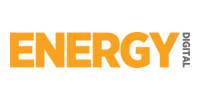 We hear from Ram Ramachander, Chief Digital Officer & Chief Commercial Officer for Social Innovation Business, at Hitachi Europe Ltd about how it is aiming to deliver future-focused battery storage solutions.
We hear from Ram Ramachander, Chief Digital Officer & Chief Commercial Officer for Social Innovation Business, at Hitachi Europe Ltd about how it is aiming to deliver future-focused battery storage solutions.